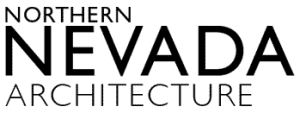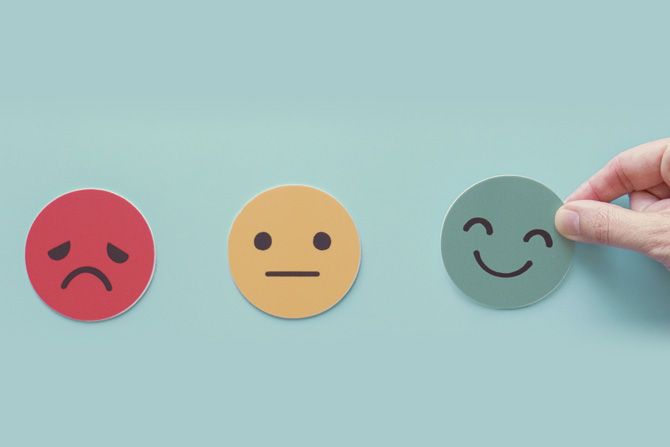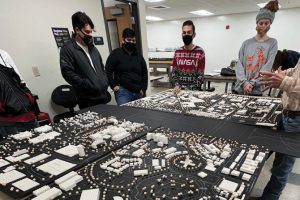Why is mental health an important topic for architects?
Shifting to remote work, taking on increased caretaking responsibilities, straddling an increasingly blurred line between home life and career – all these factors have led to amplified feelings of burnout in the general workforce over the last two-and-a-half years, and architects are experiencing them particularly acutely, according to a study by Monograph.
A June 15 webinar, Tackling Mental Health in Architectural Practice, previewed the topic of mental health ahead of Women’s Leadership Summit 2022, where it will be a focus. In particular, combating burnout and advocating for better work-life balance models on a firm-wide and industry-wide level.
Je’Nen Chastain, founder of Apostrophe Consulting, moderated the webinar and introduced the idea that inherited norms in the profession of architecture perpetuate barriers and challenges across firms that negatively impact talent – and the mental health cost is becoming too great. Putting people at the center of business and projects, according to Chastain, is a more sustainable long-term strategy.
“How do we support our teams while also creating inspiring projects?” she asked. “How do we create a healthy studio culture across the entire office and our practice?” Mental health professional Dr. Akua Boateng believes the solution lies in balancing firm actions with individual best practices.
She explained that in an interview with NBC News in the fall of 2020, she foresaw that the ways in which we, as a society, had been navigating high-level change around the pandemic and restructuring how we fundamentally see work was going to end in a mental health crisis for many.
“Within the last few years, the average household and high-achieving professional has experienced at least one occurrence of a mental health issue,” she said. Even prior to the pandemic, 19% of adults – or 50 million people in the United States – had experienced mental illness, and over half of those did not receive treatment. When the pandemic hit, the global increase in anxiety was, as Boateng put it, “a massive 25%.”
“As a therapist during that time, I can attest that anxiety was on the rise,” she said. “There were more people reaching out for mental health services than ever before, and many of the people that were coming in for treatment were first-time therapy goers.” Those who are still learning how to cope with the new realities in their lives, she emphasized, are not alone.
“Burnout is the absence of growth,” she shared. “It robs us of our ability to thrive.” Symptoms of burnout include sleep and memory issues, anxiety, lack of motivation, and anger. While this is not exclusively a women’s issue, data tells us that women in architecture (especially women of color) were already facing bias in the workplace that made career success more challenging.
Boateng emphasized that everyone has good and bad coping strategies – and on an individual level, everyone can work to strengthen the positive strategies and build resilience. She encouraged architects to take the following steps to make sure their work doesn’t lead to burnout:
- Acknowledge the need. It’s okay to voice the need to slow down, take a break, take more time on a particular assignment, or ask for more support if you feel you’re not getting it. Self-compassion is also an important part of this step.
- Address the fear/concern. “What do I believe could happen that’s keeping me from addressing the issue?” Acknowledging these fears and bringing them to the surface with help you cope with them.
- Identify boundaries that you need. Implementing boundaries helps individuals manage their anxiety around obligations and do their best work.
As a result of this individual work and changing the culture one by one, Boateng said, “Hopefully, there’s a collective mission that happens.” Mindful leadership changes culture. “Culture begins to shift when we realize what’s good for our collective and not just for our products,” she said.
One of the things that firms can do for their employees across the board, Boateng said, is to develop a resilient approach to staffing and workload.
“Resilience is being able to have the resources that – when [a] crisis happens or some type of challenge occurs – you’re able to safely navigate it and cope,” she said. Acknowledging needs and being aware of how to meet them is a key facet of resilience – and while individuals can implement their own resilience strategies, firms, and the industry at large, should also think about resilience collectively or systemically.
“Let’s identify the needs of the collective – let’s talk about and address their concerns or their fears,” she says. “It’s about creating a system where those things are identified and systemically oriented within your ethos.”
Boateng says that more data needs to be collected regarding burnout in architecture for the root causes to be addressed.
“Taking data is always going to be first,” she said. “Let’s get an understanding of the nature of the architects in the industry – how are they feeling? What is connected to their burnout? Are they still connected to the value they find in the industry? Data, and being able to have information as to what’s happening currently, is very important.”
How does a healthy work culture support individuals?
Annelise Pitts, AIA, an architect at Shepley Bulfinch, an upcoming speaker at WLS 2022, and a researcher and consultant in areas of justice, equity, diversity, and inclusion, drew on her own experiences as a mother of a three-year-old working during the pandemic to point out that burnout’s key drivers are organizational factors.
As Pitts told attendees, women in most fields are more likely than men to experience burnout –architecture is no different. Long hours, an expectation of personal sacrifice, and blurred personal and professional boundaries are all contributing factors.
As mentioned, Pitts currently works at Shepley Bulfinch, which, she says, “is a firm that has deeply aligned values with mine.” As Pitts shared, these values show up through mindsets, habits, and systems that support employees. They range from cultivating psychological safety on teams to strategic commitments to EDI, learning and empowerment. Pitts used David Rock’s SCARF (status, certainty, autonomy, relatedness, fairness) model to demonstrate how the hierarchy and pressures of an architecture office can negatively impact a professional’s mental health. According to Rock, the brain is a social organ and experiences the workplace first and foremost as a social system. When individuals feel threatened and unsupported, they feel unsafe taking risks, and creativity can be limited – which, in a creative field like architecture, is a problem.
Focusing on culture and mindset, and changing them one day at a time, as Shepley Bulfinch has tried to do, is the way to move forward, Pitts emphasized. Using her own workplace as a model, she shared examples of productive mindsets and habits – a commitment to learning and growing together and treating everyone with kindness and respect, paired with tangible support systems like flexibility (a hybrid-forward work schedule, summer Fridays) and resources (healthcare, wellness benefits). She also pointed out that psychological safety – or the reassurance that you won’t be punished or humiliated for speaking up with ideas, questions, concerns, or mistakes – is essential to any workplace where employees feel supported.
Pitts closed out her presentation with an exploration of what individuals, co-workers and firms can do to support themselves and each other, including an honest assessment of firm culture to identify areas of improvement and support for flexible, sustainable work-life relationships.
Leading incremental change and creating accountability in firms have the power to build a healthier profession.
Originally published on the AIA website, AIA.org, on Aug 15, 2022, and updated on Sept. 12, 2022, this article has been edited for length and formatting.








